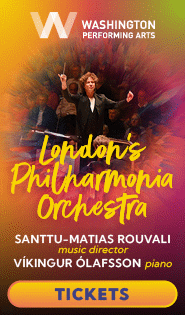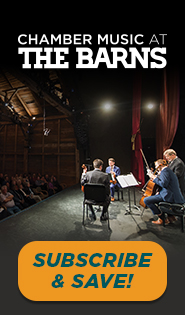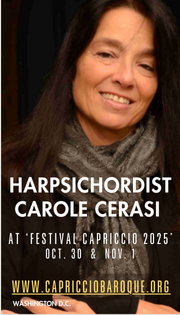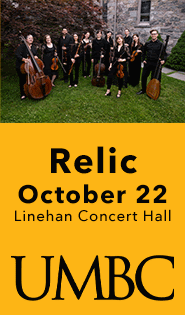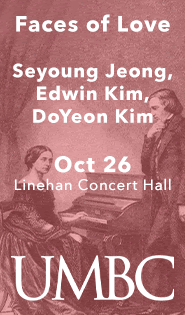WNO serves up inspired singing and whimsy in colorful “Magic Flute”
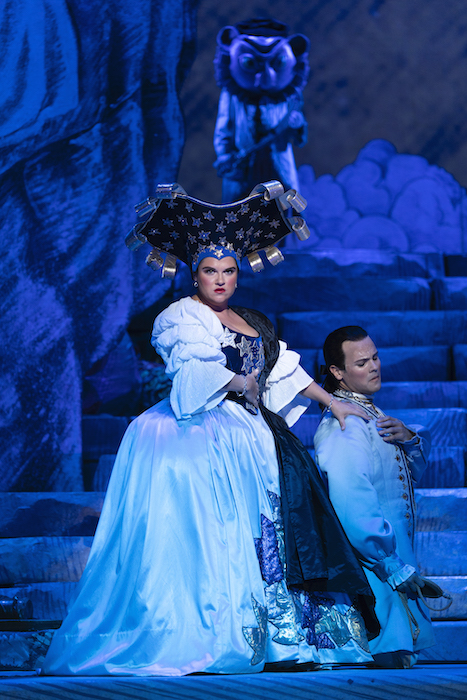
A production of The Magic Flute should be magical.
Washington National Opera revived Mozart’s fairy-tale singspiel Saturday night at the Kennedy Center Opera House, in the familiar staging inspired by the whimsical artwork of children’s author Maurice Sendak. The result is a sugary bonbon that children can connect to, not least because it is sung in Andrew Porter’s elegant English translation, but with a subversive edge that will keep adults engaged as well.
Kathryn Lewek made a triumphant return as the Queen of the Night, as venomous of tone as when she sang the role in 2014. Rising up on a rear-stage platform at her Act I entrance, the American soprano menaced and scowled with delight both visual and aural. The coloratura antics were solid and beautiful, especially in her big Act II aria. Lewek lost the tempo briefly in the triplet passage in that showpiece, rushing ahead precipitously, but as this also happened with other singers, blame likely falls to the conductor, Eun Sun Kim.
David Portillo excelled as Tamino, a sterling lyric tenor with a sweet ring in the top notes and a princely stage presence. The combination of vocal elements in Portillo’s voice was nearly ideal. The heroic high notes were present, as in the opening scene with the dragon, but with a dulcet lyricism. The legato soft side was meltingly smooth and tender, as in the Act I aria “Dies Bildnis ist bezaubernd schön.”
Soprano Sydney Mancasola was a comely Pamina in her successful company debut, although a nervous vibrato flutter unsettled the intonation on longer notes. The youthful innocence of Mancasola’s tone was a major asset in the ensemble with the Three Spirits–Aidan Stanton-Brand, Abigail Jamison, and Holden Browne–which had a disarming simplicity to it. Where a more sustained line and clarity of pitch were required, as in the Act II aria “Ach, ich fühl’s,” Mancasola came up slightly short.
Bass Wei Wu, a distinguished alumnus of the Domingo-Cafritz Young Artists program, plied his deepest range in a sage rendition of the high priest, Sarastro.
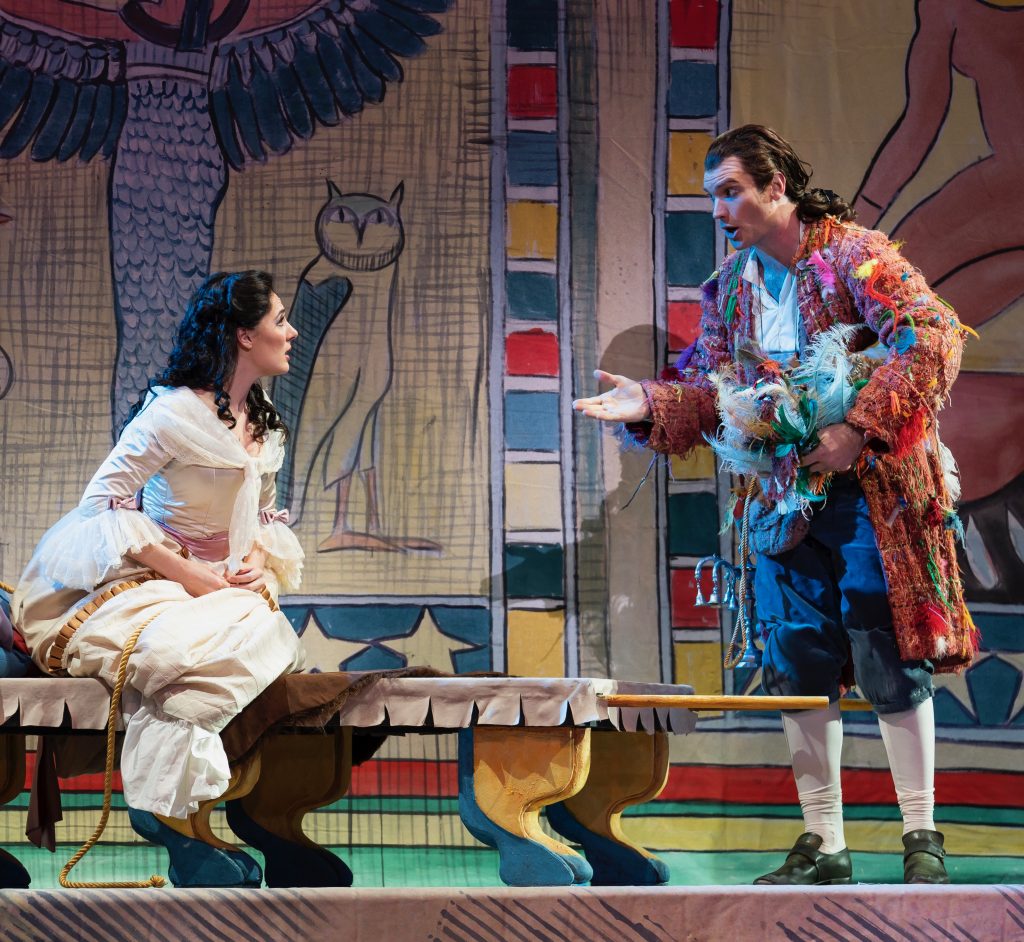
Another young artist alumnus, baritone Michael Adams, was musically a little shaky as Papageno, often getting ahead of the beat. On the other hand, the tone of the role, both vocally and in comic timing, was ideal, a ridiculous foil for Portillo’s Tamino. Luxury casting of young artists and company favorites rounded out the cast, including soprano Alexandra Nowakowski as a spritzy Papagena.
Indeed one of the highlights of the evening was the regular appearances of the three ladies of the Queen of the Night. With soprano Alexandria Shiner (First Lady), mezzo-soprano Deborah Nansteel (Second Lady), and the booming contralto of Meredith Arwady (Third Lady), their brilliant ensemble moments sparkled. Character tenor David Cangelosi hammed it up as the absurd villain Monostatos, and bass Kevin Short made a gorgeous cameo as the Speaker.
At the podium, Korean conductor Eun Sun Kim left a mixed impression. From the opening triple strikes of the overture, she did not give much leeway at parts where other conductors, in line with conventional ideas, might slow down. While that independence was refreshing, she had some trouble bringing the orchestra and some of the singers along with her. It was a far cry from the authoritative touch of former music director Philippe Auguin, who led the company’s last production of this opera in 2014.
The WNO Chorus was small in number but valiant. It was a mistake, though to have them sing one number in the aisles. The volume level of such powerful voices at close range could stun a cat.
Christopher Mattaliano directed this effervescent production, with the Sendak sets and costumes (scenery design realized by Neil Peter Jampolis). The gestures of the staging are bold and grand, with full-stage scrims brimming with fanciful drawings. The opening vista showed a cave, populated by a Where the Wild Things Are-style dragon with glowing eyes and a not-so-threatening walk.
Sendak made the Masonic symbolism of the opera explicit, incorporating Masonic symbols in the scenic designs and costuming the members of the fraternal order with Masonic aprons. In addition to Egyptian imagery, sprinkled throughout, Sendak used the archaic Greek sculpture of the Lion Gate at the citadel of Mycenae for the door of the Masonic Temple. These lions apparently came to life as charming supernumerary characters encountered by Tamino and Papageno.
The scenery for the trials, glowing orange for the fire and ice-cool blue for the water, gave an exciting edge to that potentially dull scene late in the opera. There were no extraneous directorial ideas to puzzle over, just a staging lavish in color and variety.
The Magic Flute runs through November 23. kennedy-center.org; (202) 467-4600
